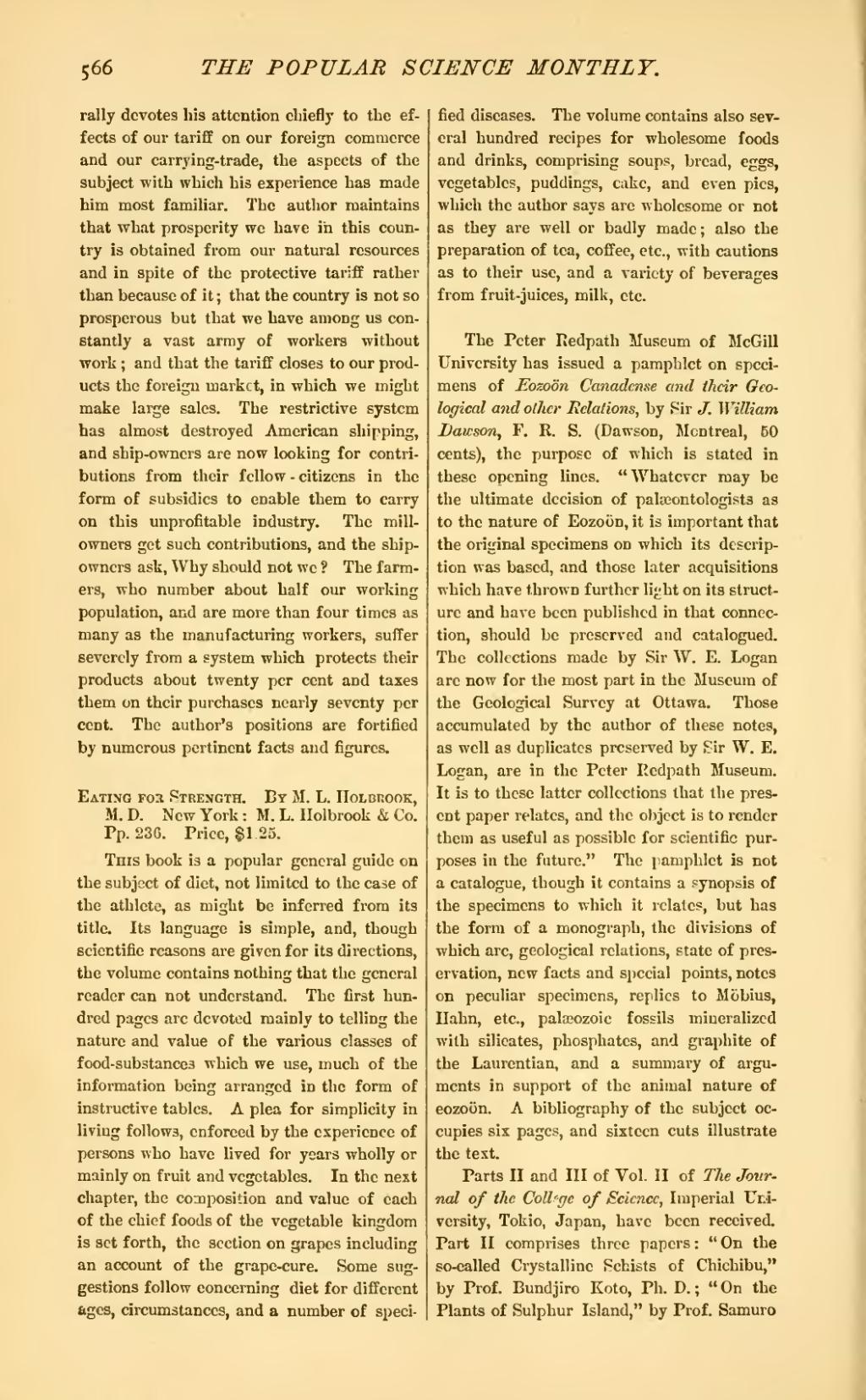rally devotes his attention chiefly to the effects of our tariff on our foreign commerce and our carrying-trade, the aspects of the subject with which his experience has made him most familiar. The author maintains that what prosperity we have in this country is obtained from our natural resources and in spite of the protective tariff rather than because of it; that the country is not so prosperous but that we have among us constantly a vast army of workers without work; and that the tariff closes to our products the foreign market, in which we might make large sales. The restrictive system has almost destroyed American shipping, and ship-owners are now looking for contributions from their fellow-citizens in the form of subsidies to enable them to carry on this unprofitable industry. The mill-owners get such contributions, and the ship-owners ask, Why should not we? The farmers, who number about half our working population, and are more than four times as many as the manufacturing workers, suffer severely from a system which protects their products about twenty per cent and taxes them on their purchases nearly seventy per cent. The author's positions are fortified by numerous pertinent facts and figures.
Eating for Strength. By M. L. Holbrook, M. D. New York: M. L. Holbrook & Co. Pp. 236. Price, $1,25.
This book is a popular general guide on the subject of diet, not limited to the case of the athlete, as might be inferred from its title. Its language is simple, and, though scientific reasons are given for its directions, the volume contains nothing that the general reader can not understand. The first hundred pages are devoted mainly to telling the nature and value of the various classes of food-substances which we use, much of the information being arranged in the form of instructive tables. A plea for simplicity in living follows, enforced by the experience of persons who have lived for years wholly or mainly on fruit and vegetables. In the next chapter, the composition and value of each of the chief foods of the vegetable kingdom is set forth, the section on grapes including an account of the grape-cure. Some suggestions follow concerning diet for different ages, circumstances, and a number of specified diseases. The volume contains also several hundred recipes for wholesome foods and drinks, comprising soups, bread, eggs, vegetables, puddings, cake, and even pics, which the author says are wholesome or not as they are well or badly made; also the preparation of tea, coffee, etc., with cautions as to their use, and a variety of beverages from fruit-juices, milk, etc.
The Peter Redpath Museum of McGill University has issued a pamphlet on specimens of Eozoön Canadense and their Geological and other Relations, by Sir J. William Dawson, F. R. S. (Dawson, Montreal, 50 cents), the purpose of which is stated in these opening lines. "Whatever may be the ultimate decision of palæontologists as to the nature of Eozoön, it is important that the original specimens on which its description was based, and those later acquisitions which have thrown further light on its structure and have been published in that connection, should be preserved and catalogued. The collections made by Sir W. E. Logan arc now for the most part in the Museum of the Geological Survey at Ottawa. Those accumulated by the author of these notes, as well as duplicates preserved by Sir W. E. Logan, are in the Peter Redpath Museum. It is to these latter collections that the present paper relates, and the object is to render them as useful as possible for scientific purposes in the future." The pamphlet is not a catalogue, though it contains a synopsis of the specimens to which it relates, but has the form of a monograph, the divisions of which are, geological relations, state of preservation, new facts and special points, notes on peculiar specimens, replies to Möbius, Hahn, etc., paleozoic fossils mineralized with silicates, phosphates, and graphite of the Laurentian, and a summary of arguments in support of the animal nature of eozoön. A bibliography of the subject occupies six pages, and sixteen cuts illustrate the text.
Parts II and III of Vol. II of The Journal of the College of Science, Imperial University, Tokio, Japan, have been received. Part II comprises three papers: "On the so-called Crystalline Schists of Chichibu," by Prof. Bundjiro Koto, Ph. D.; "On the Plants of Sulphur Island," by Prof. Samuro

